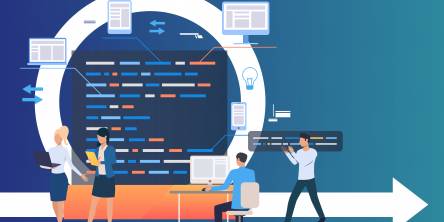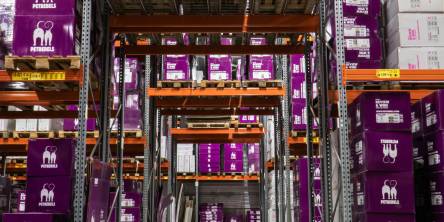Steps to a Successful Azure Migration

Cloud migration moves applications and data from one location, usually from on-premises servers to a public cloud provider's servers. Cloud migration benefits include reduced IT costs, performance improvements, security, convenience & more.
What is Azure Cloud Migration
Moving data and/or applications to Microsoft's public cloud is called Azure cloud migration. Azure Cloud Services is a comprehensive cloud computing platform providing various services like Infrastructure as a Service (IaaS), Platform as a Service (PaaS).
- Public cloud - A public cloud platform is a virtual environment that is openly accessible and managed by a third party whose infrastructure is managed by Microsoft.
- IaaS - With Infrastructure as a Service (IaaS), users can access raw resources like storage space.
- PaaS - The Platform as a Service (PaaS) offers users the tools and building blocks needed to create and run apps as a part of its offering.
Types of Cloud Migration
There are two technical factors in most migrations -
- The resource or workload that is to be migrated.
- The location that this resource or workload is migrated to.
Some of the Most Common Migration Scenarios
- Data Center migration: The data center migration process moves data from on-premises servers and mainframes to a cloud provider's servers. High-capacity networks are the most common way to move data center resources to the cloud. The resources can also be migrated by moving the data onto high-capacity disks or data boxes and then physically shipped to the cloud provider for uploading.
- Hybrid cloud migration Organizations may decide not to move all the resources to the cloud, retaining a part of their resources on-premises data centers and moving a part to the cloud. It effectively creates a hybrid cloud. The benefits of a hybrid cloud structure are maximizing the value of the existing on-premises data centers and allowing them to meet the industry and governmental compliance guidelines.
- Hybrid clouds are helpful for cloud-to-cloud backups, in which the on-premises data is backed onto a cloud as a disaster recovery solution. Cloud-to-cloud migration Many organizations use a multi-cloud strategy where their data is stored on cloud servers of more than one cloud service provider and may move their data from one cloud to another using cloud-to-cloud migration. Migration of this type is beneficial when organizations wish to take advantage of different cloud platforms' products, services and pricing. Cloud-to-cloud migration can be conveniently managed using a central management tool.
- Application, database & mainframe migration Linux, SQL Server, SAP and Windows Server are the most commonly migrated workloads, whereas, for mainframe migration, the most widely used are IBM and Unisys. Cloud migration benefits for such workloads are typically lower costs, faster and more reliable performance, access to cloud-based developer tools, APIs, robust security and to increase or decreased capacity without the need to purchase, install and maintain new equipment.
The Azure Migration Steps
- Assessment - Many factors need to be considered before migrating, such as whether the applications and data are cloud-ready or cloud readiness. To ensure a seamless transition, dependencies between different applications must be determined. The transfer management must ensure that the data to be migrated can be extracted and migrated without any loss or corruption, among many other aspects.
- Verification of company's needs - After the assessment, the actual requirements for migration can be determined. The need to migrate legacy software has to be addressed, while downtime needs to be addressed and scheduled for apps and software that need time-bound migration.
- Deciding on a migration method - There is no single method for cloud migration, and organizations should plan for migration as per their needs and requirements. The most common types of migration include lift and shift, refactor and replatform.
- The simplest form of migration is lift and shift, wherein the data and applications are moved from on-premises servers to the cloud. The data and apps are refactored or changed to suit the cloud environment in the refactoring method. The data and apps get minor modifications to take advantage of the cloud infrastructure in re-platforming.
- Planning for migration Azure migration has multiple stages to it and a well-planned migration can make the most effective use of the cloud infrastructure with minimal impact on the users. At this stage, the IT teams can ensure that the organization will not face any security threats and compliance issues. The penalty for ignoring this step can mean moving the migrated data and apps back to make them compliant, resulting in a costly and disruptive exercise that can hurt the modernization strategy.
- Migrate - The next step is actually to migrate to the cloud. The migration is planned and timed to cause users minimal or no outage or disruption. One of the standard methods is to start small, i.e. migrate a small part or section of data and apps to ensure that migration is going as intended before moving or ramping up the migration movement.
- Optimize - Once the data, apps, files, tools are successfully migrated, monitoring is required to identify issues and possible areas of optimization. This optimization can increase cost savings or improve the user experience. Optimization is an ongoing process as updates are applied.
In conclusion, For organizations looking to migrate to Azure cloud, the benefits include cost savings and the ability to scale quickly and easily.
Similar Articles
Unless you have been hiding in a cave somewhere, you would know and realize that the world is creating information at a stunning speed. While it is genuinely considered normal information that said data can now be turned into the groundwork of achievement for essentially any business in the present day and age.
Software development refers to the procedure of constituting and nourishing software applications. This provokes the utilization of many fundamentals and practices. Software development targets constitute structured, dependable, and beneficial software.
Designing a data warehouse is a strategic activity that builds the groundwork for strong data management and analytics capabilities within a business. In today's data-driven world, the systematic creation of a data warehouse is not only a technical requirement but also a critical step in harnessing the power of information for informed decision-making.
The integration of Internet of Things (IoT) technology into the construction and real estate sectors, which include buildings, infrastructure, homes, and businesses, is predicted to increase dramatically in the future. Despite this predicted expansion, the construction industry is behind other industries in terms of IoT adoption.
In this dynamic world of innovative and transformative technology, the use of Minimum Viable Product (MVP) has proven to be a winning strategy for success.
While monolithic applications may have waned in popularity during the era dominated by the cloud and microservices, interest is resurgent. Organizations, in considering their position on the application modularity spectrum, are now examining both the advantages and drawbacks of relying on microservices.
Data visualization is an indispensable tool that allows us to transform raw, and often unstructured data into insightful visuals, identify patterns, and communicate these insights to the wider audience and stakeholders.
For modern businesses to thrive, ensuring the effective management of inventory stands has become vitally important. Inventory management stands as a cornerstone of success. And the emergence of the Internet of Things (IoT) has introduced a new era of connectivity and efficiency across diverse industries.
Do you know what the following e-commerce companies have in common: Amazon, Walmart, eBay, and more? All of these e-commerce companies' apps make use of Java. Java is decidedly among the leading choices of programming language for e-commerce applications because it offers a world of benefits; for example, since Java code can be run on any platform with a Java Virtual Machine (JVM), users of e-commerce apps made with Java can access the said apps on a variety of devices.








